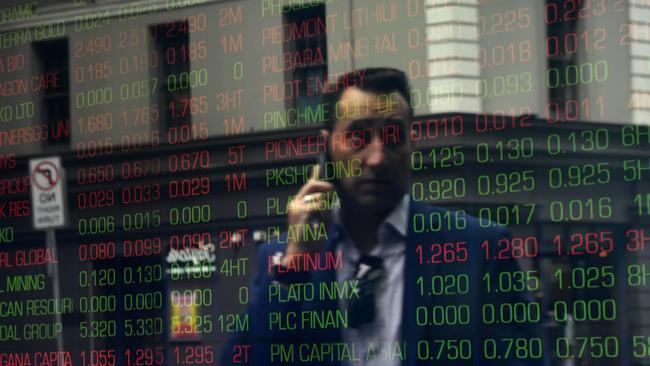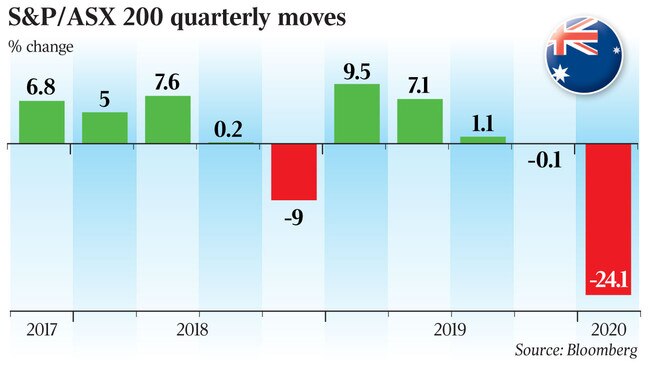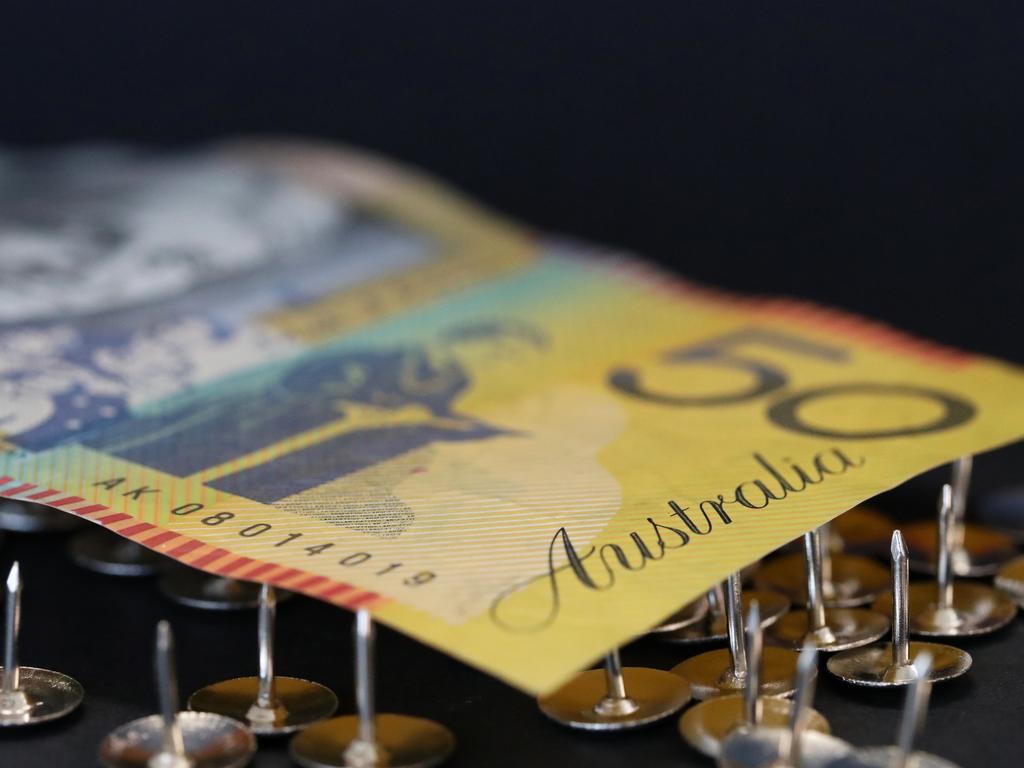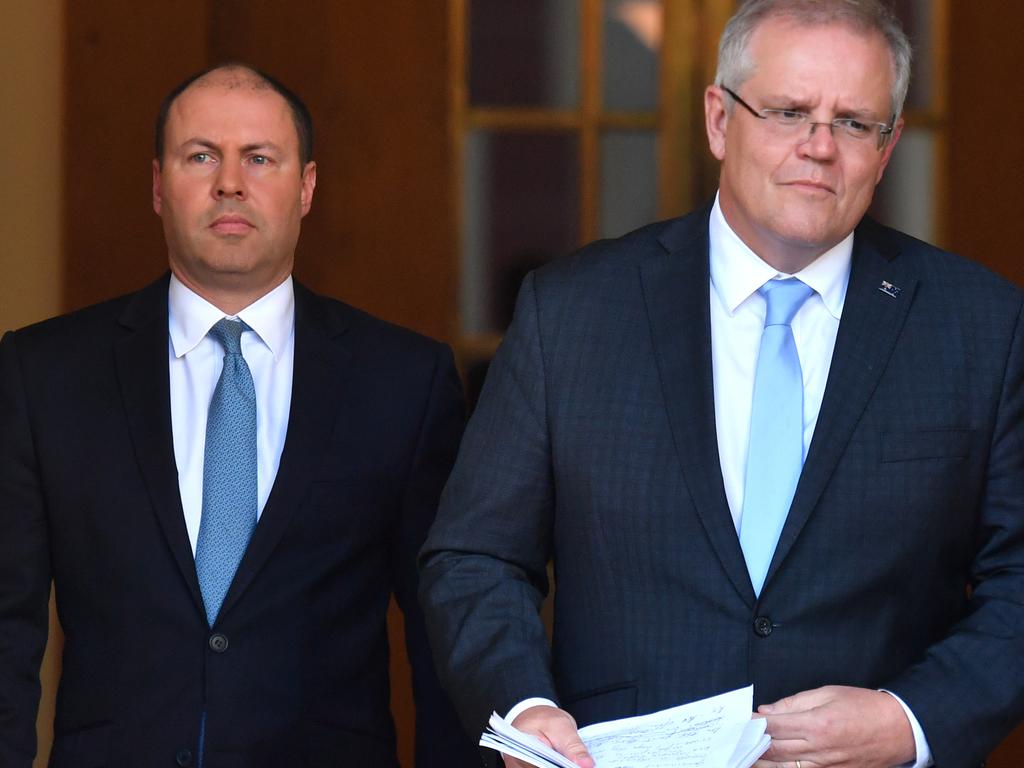Reality check for investors as volatility rules
A huge bounce in global sharemarkets in the past week was far from healthy and the extreme volatility is disconcerting.

A huge bounce in global sharemarkets in the past week was far from healthy.
As much as the unprecedented policy measures to counter the severe economic damage from unprecedented lockdowns to fight the coronavirus pandemic are necessary preconditions for an eventual lasting recovery, the extreme volatility in global markets in the past week is disconcerting.
After a devastating quarter for long-only funds, the hoped-for “V-shaped” global economic recovery looks elusive.
Indeed with the world potentially still in the early stages of a financial crisis caused by a public health crisis and a damaging oil price war, the June quarter may not be much better. The S&P/ASX 200 lost 24 per cent in the March quarter — its worst quarter since inception in 2000.
The All Ordinaries lost 24.9 per cent, its worst since the 1987 Crash and the third-worst since at least 1970. Thankfully investors were spared from the worst after a massive bounce in the past week.
But after an incredible 22 per cent bounce from a seven-year low just over a week ago, the S&P/ASX 200 is vulnerable to a reality check after what would normally be a great rise for one or two years.
In much the same fashion as last Friday, the S&P/ASX 200 share index reversed a 3.6 per cent intraday rise to close down 2 per cent at 5076.8 points on Tuesday.

A huge 5.4 per cent intraday fall from a two-week high of 5366.4 points came for no reason other than that buying dried up and selling resumed almost as soon as the latest impressive stimulus package from the federal government was delivered. Turnover was actually fairly light.
Wesfarmers took advantage of Monday’s record 7 per cent rally almost immediately, offloading a 5 per cent stake in Coles amid optimism about the government’s $130bn wage subsidy. Even then, their brokers seemed to have to work a bit harder and go a bid wider than normal to get it done.
Of course many fund managers who (understandably) didn’t predict the “black swan” event now known as COVID-19 are now saying what a great buying opportunity this bear market represents.
But while this crisis is unique, optimism usually doesn’t give birth to sustained bull markets, even if the Dow Jones index achieved that status last week after its shortest bear market in history.
Panic selling and forced selling was undoubtedly prevalent in the five-week collapse in global sharemarkets, which in some cases saw the fastest moves from bull to bear in history, and the associated damage to market positioning is another precondition for a sustained bounce.
But the market certainly hasn’t reached the “demoralisation phase” that was seen in the 87 crash and the global financial crisis of 2008, where investors said they would “never buy shares again”.
Not that it has to reach that phase, but with all that the world is going through it probably will.
Nor has the market seen the widespread dividend cuts and deeply discounted capital raisings that the professional traders know will come thick and fast in coming months after the unprecedented mass withdrawal of corporate earnings guidance in recent weeks.
With so much uncertainty about the corporate earnings outlook, the roughly 8 per cent downgrade of the consensus earnings per share estimate and 7 per cent downgrade of the consensus dividend per share estimate probably isn’t enough.
If so, the consensus-based price-to-earnings ratio of 14.2 times and dividend yield of 5.1 per cent — near their long-term averages — will be somewhat illusory.
Of course the focus will go back to return on capital at some point and central bank policies will force investors out of cash and into shares. But for now the focus is return of capital.








To join the conversation, please log in. Don't have an account? Register
Join the conversation, you are commenting as Logout